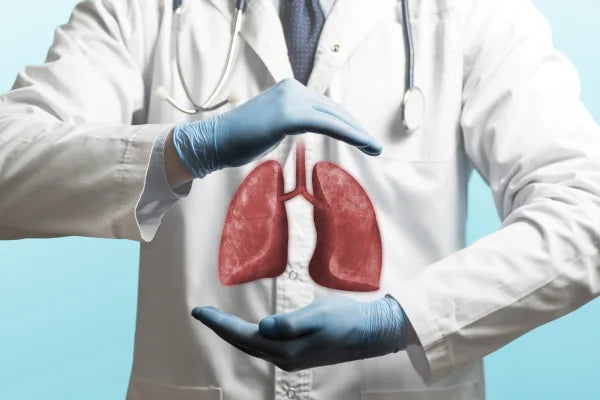
Lung Detox: Effective Ways to Clean and Improve Your Lungs
Share
Lung Detox: How to Clean Your Lungs?
Listen to this Article
Table of Contents
Quit Smoking and Avoid Pollutants
Quitting Smoking
Smoking is the leading cause of lung damage and respiratory diseases like chronic obstructive pulmonary disease (COPD) and lung cancer. To detoxify your lungs, the first and most crucial step is to quit smoking. Within hours of quitting, your lung function begins to improve, and over time, your lungs can begin to heal. Although quitting smoking is challenging, it is the most effective way to slow down or even reverse the damage caused by smoking.

Avoid Pollution
Air pollution, whether indoor or outdoor, can damage your lungs and worsen respiratory conditions. Minimizing exposure to pollutants like car exhaust, industrial fumes, and secondhand smoke is crucial for lung health. You can reduce exposure by staying indoors on high-pollution days, using air purifiers, and avoiding crowded or heavily polluted areas.
Improve Lung Function
Exercise
Regular exercise helps strengthen your respiratory muscles, improving lung capacity and efficiency. Aerobic exercises like walking, swimming, or cycling can significantly enhance oxygen exchange and circulation. It’s essential to start slowly and gradually increase intensity, especially for those with existing lung conditions.
Breathing Exercises
Breathing exercises, such as diaphragmatic breathing (belly breathing) and pursed-lip breathing, can help increase lung capacity, reduce shortness of breath, and improve overall lung function. These exercises encourage deep breaths and proper airflow, helping your lungs expel more air and improving their ability to take in oxygen.
Controlled Coughing
Controlled coughing is a technique that helps clear mucus from the airways. By using a slow, controlled cough, you can prevent mucus buildup that may obstruct the airways. This is particularly helpful for individuals with chronic respiratory conditions like COPD.
Steam Therapy
Steam therapy helps loosen mucus in the airways, making it easier to expel. Inhaling steam from a hot shower or using a steam inhaler can soothe irritated airways and provide relief from congestion. It’s an effective way to keep your lungs clear and improve overall lung function.

Hydration and Diet
Stay Hydrated
Hydration is key to keeping the mucus in your lungs thin and easier to expel. Drinking enough water helps your body maintain proper lung function and supports the detoxification process. Aim to drink at least 8 glasses of water a day, and consider adding hydrating foods like fruits and vegetables to your diet.
Anti-inflammatory Foods
Consuming a diet rich in anti-inflammatory foods can help reduce lung irritation and improve overall respiratory health. Foods like berries, leafy greens, and fatty fish are packed with antioxidants and omega-3 fatty acids, which can help protect the lungs from further damage. Additionally, garlic, ginger, and turmeric have anti-inflammatory properties that can further promote lung health.

Other Helpful Strategies
Chest Percussion
Chest percussion is a physical therapy technique that involves gently tapping or clapping on the chest to help loosen mucus from the lungs. It can be done by a healthcare professional or with the help of a special device. This technique helps individuals with respiratory conditions clear mucus from their airways and improve lung function.
Green Tea
Green tea is packed with antioxidants, particularly catechins, which can help protect lung tissue from oxidative damage. Drinking green tea regularly may also improve lung function and reduce inflammation. It’s a simple, natural addition to your lung detox regimen.
Summary
- Quitting smoking and avoiding pollutants is the first step toward lung detox.
- Breathing exercises and regular exercise can improve lung capacity and function.
- Staying hydrated and consuming anti-inflammatory foods support lung health.
- Additional strategies like chest percussion and green tea can further improve lung function and detoxification.
